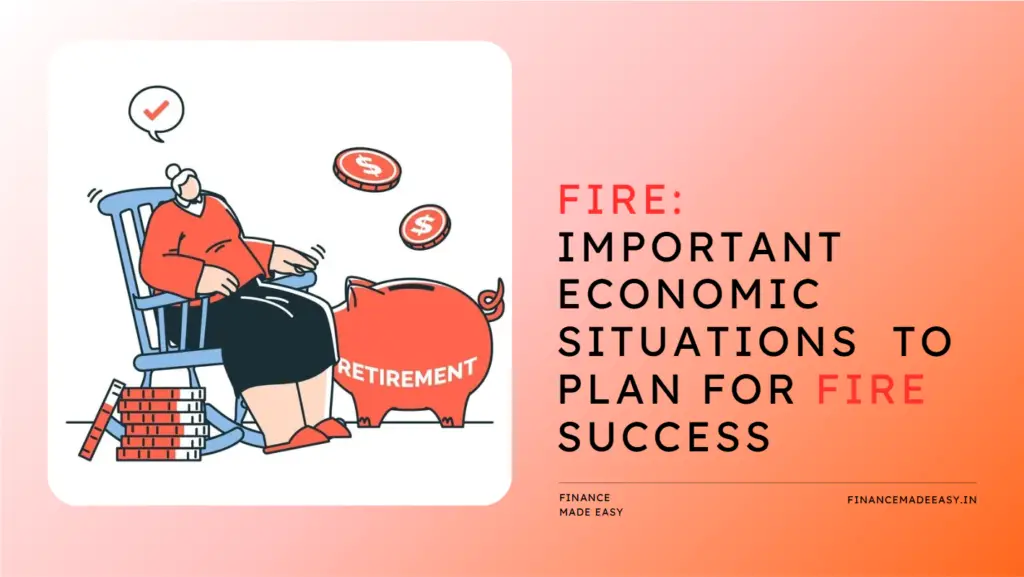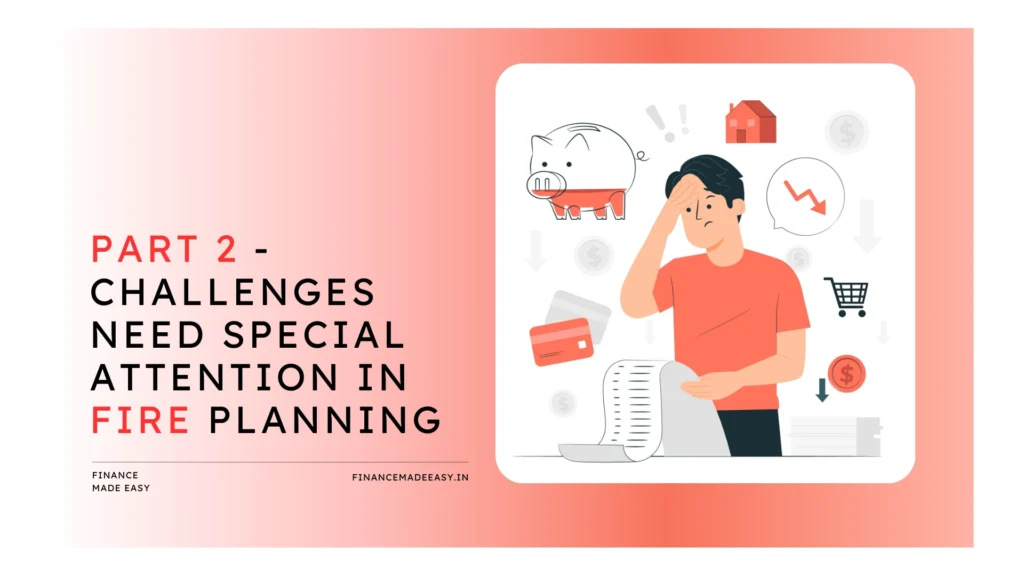Sharing is caring!
Table of Contents
ToggleIntroduction to PART-3 on FIRE:
From our FIRE topic we learn that every financial product has certain risk and unpredictability associated with it. To plan for retirement and for longer durations, we need some certainty in our calculations. And for a longer retirement horizon, you need to invest some part of your retirement corpus in Equities.
In this blog, we try to understand fundamentals of return expectation from stock markets to help in our Equity allocation of FIRE Corpus.
Your Corpus Needs Equity for Longevity
With early retirement, you are exposing yourself to a much longer retirement life 30 to 40 years, have you ever wondered, if your corpus lasts for that long? What if the stock market does not perform as expected? What if inflation is higher than expected? What if the stock market stays sideways like Japan for decades?
It is really difficult to fund your long retirement life without answering these questions. And for such a long runway to overcome the shortfall of corpus you need to have equity allocation.
Slightest mistake costs huge penalty as you can’t get back to work after you went wrong with your retirement corpus in middle of your retirement, and you can’t even be depended on your children (there is no guarantees that your child has working, he might be still in graduation too)
You would have probably heard 12% is the average returns you can expect from Indian stock investing from your portfolio manager or financial planners, but have you ever wondered why 12% is used as the baseline assumption in your financial planning for stock market investments?

Your investment could yield a better return 15%, 18% or even more, but somehow financial planners or experts are convinced to assume 12% as a reasonable return assumption from the stock market. If you understand the logic behind this, you will be better equipped to make your early retirement a successful reality.
Why is 12% Returns the Benchmark?
Returns from Stock market(index) = GDP Growth of the Country + Inflation in the country.
This is a very powerful framework, which I am using for my own FIRE Planning, that addresses many questions like will your corpus last for that long retirement for 30 to 40 years? What if the stock market does not perform as expected? What if inflation is higher than expected? What if the stock market stays sideways like Japan for decades?
This formula comprises two Economic indicators, GDP Growth and Inflation in Country.
- GDP Growth: When a country’s economy grows, it leads to increase in corporate earnings because of increased consumer spending and increased employment opportunities. This often results in increased profitability of companies and increased share prices.
- Inflation: On one level inflation is considered as bad, as it eats the value of our money, but actually healthy inflation levels often indicate a growing economy.
Let us understand effect of inflation with examples,
In a healthy inflation environment, since the value of money decreases, it encourages consumers to spend and invest rather than hold on to cash. Resulting liquidity in banks, access to corporates to invest to grow the businesses, which positively impact the economy.
Crude oil is raw material for paints. If Crude oil prices rise, the cost of producing paints rises, Asian paints as a company will pass this price on to customers, causing price hikes for end customers (due to inflation). Once the Crude oil price comes back to normal range, Asian paints continue to charge the same price to end customers, thus increasing the company margins and profitability.
Here the increase in price actually did more good to companies than bad.
If the inflation in the economy is too high than the limit set by the RBI in India, it results in an increase in Interest rates that impacts negatively in the short term.
Table 1: India (10-Year Period Analysis)
| Period | GDP Growth (Average) | Inflation (Average) | Estimated Returns (GDP + Inflation) | Actual Stock Market Returns (Nifty 50) | Difference (Actual - Estimated) |
|---|---|---|---|---|---|
| 2011-2020 | 6.7% | 6.2% | 12.9% | 10.9% | -2.0% |
| 2001-2010 | 7.3% | 6.1% | 13.4% | 17.8% | +4.4% |
| 1991-2000 | 6.0% | 7.0% | 13.0% | 14.0% | +1.0% |
Table 2: India (20-Year Period Analysis)
| Period | GDP Growth (Average) | Inflation (Average) | Estimated Returns (GDP + Inflation) | Actual Stock Market Returns (Nifty 50) | Difference (Actual - Estimated) |
|---|---|---|---|---|---|
| 2000-2019 | 7.0% | 5.8% | 12.8% | 14.6% | +1.8% |
| 1980-1999 | 5.6% | 8.3% | 13.9% | 12.1% | -1.8% |
As you can see from table 1 and table 2, over the 10 year and 20-year timeframe, Market returns are more or less in line with the GDP + Inflation levels.
In the short term, 5-year timeframe, the returns are highly deviated because of external factors such as global market volatility, slowdown, political changes etc. Hence short-term returns are difficult to predict
Table: India (5-Year Period Performance)
| Period | GDP Growth (Average) | Inflation (Average) | Estimated Returns (GDP + Inflation) | Actual Stock Market Returns (Nifty 50) | Difference (Actual - Estimated) |
|---|---|---|---|---|---|
| 2016-2020 | 7.4% | 4.7% | 12.1% | 11.5% | -0.6% |
| 2011-2015 | 7.5% | 9.2% | 16.7% | 7.4% | -9.3% |
| 2006-2010 | 8.6% | 6.2% | 14.8% | 11.5% | -3.3% |
| 2001-2005 | 5.5% | 5.5% | 11.0% | 30.3% | +19.3% |
| 1996-2000 | 7.2% | 7.5% | 14.7% | 10.0% | -4.7% |
Conclusion:
In Conclusion, early retirement means you may need to fund your lifestyle for 30 to 40 years. For such a long period, relying on just safe investments like FDs and Bonds may not be enough, which is why equity investments become important to ensure your corpus lasts throughout your retirement.
Equity is volatile investment, and in this blog, we have discussed what are the returns that we can expect from equity investments of our corpus.
The combined average long-term inflation and GDP growth in India is approximately 12%, hence we assume 12% returns for our equity investments over the long term.
Having covered the fundamentals and the economic aspects of retirement in the past two blogs, we are now ready to calculate our early retirement corpus and start planning for the future in the upcoming blogs.
All the information shared is for educational purposes only. The blog Finance Made Easy(financemadeeasy.in) and the author is not responsible for your financial decisions.
To read more on FIRE please click here for part 1
To read more on FIRE please click here for part 2
Image by freepik
Sharing is caring!

